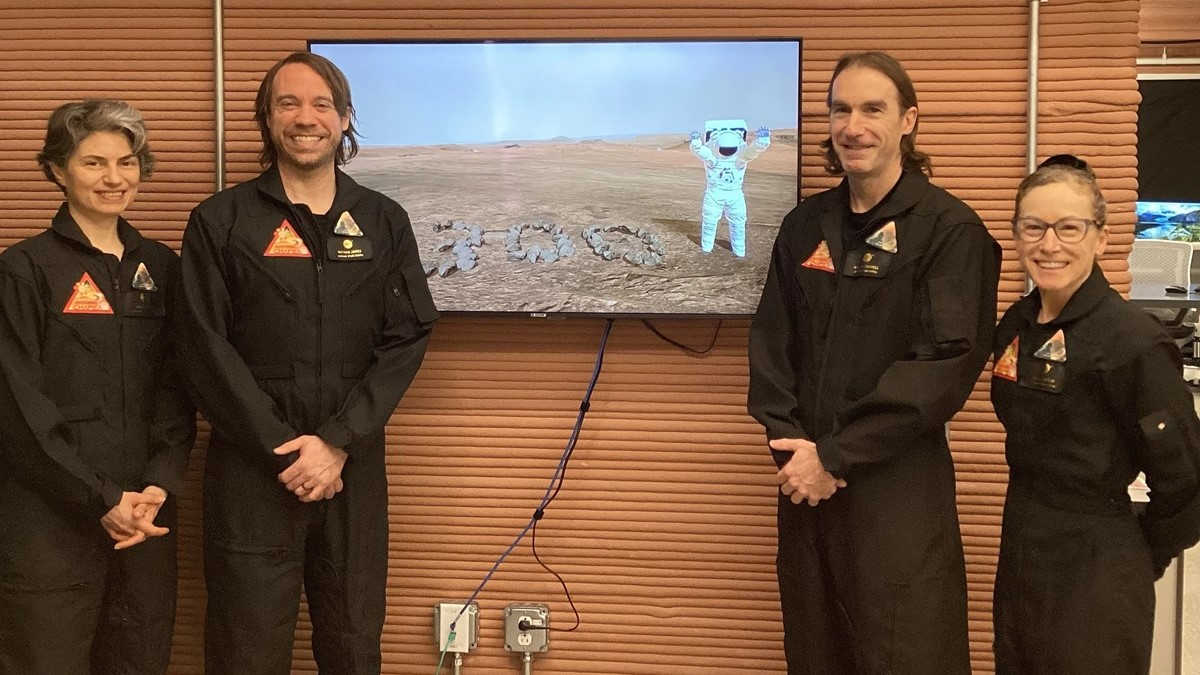Four NASA astronauts emerged on Saturday from a year-long voyage. But they never actually left Earth.
The astronauts entered a 3D-printed habitat on June 25 last year, calling it home for 378 days. They were the maiden crew of NASA’s project Crew Health and Performance Exploration Analog (CHAPEA). The artificial alien environment is at the Johnson Space Centre in Houston, Texas.
It was the first time NASA used a simulated Mars environment to test human space missions.
Coming out of the habitat on Saturday afternoon local time, mission commander Kelly Haston began a press conference with: “Hello,” adding, “it’s actually just so wonderful to be able to say ‘hello’ to you all.”
The crew spent the past 12 months in a habitat known as “Mars Dune Alpha.” The structure is a little more than 150 square metres in size.
Medical officer and crewmember Nathan Jones says the 378-day confinement “went by quickly.”
During their stay, the crew simulated Mars mission operations. For example, they went on “Marswalks,” grew and harvested vegetables to supplement shelf-stable foods and maintained equipment and the habitat.
In addition to their isolation, the crew were subjected to simulated problems such as communication delays with Earth and resource limitations.
The team says, in addition to telling us about future space exploration missions, the experiment also shows the importance of sustainable living on Earth.
“I’m very grateful to have had this incredible opportunity to live for a year within the spirit of planetary adventure towards an exciting future,” says the crew’s flight engineer Ross Brockwell. “And I’m grateful for the chance to live the idea that we must utilise resources no faster than they can be replenished and produce waste no faster than they can be processed back into resources.”
“We cannot live, dream, create or explore on any significant timeframe if we don’t live these principles, but if we do, we can achieve and sustain amazing and inspiring things like exploring other worlds.”
NASA is preparing to send people to other planetary bodies for the first time since 1972 when the Apollo 17 astronauts went to the Moon. The much awaited Artemis II mission is set to send people back to the Moon as early as next year.
But humans have never set foot on any other body apart from Earth and the Moon. Our near neighbour Mars – which may yet offer up clues that it once had life – is the next target of crewed missions to other planets in the solar system.
“Mars is our goal,” says Steve Koerner, deputy director of Johnson Space Centre. The experiment, he adds, is “crucial science as we prepare to send people on to the red planet.”
“Why go to Mars?” asks the crew’s science officer Anca Selariu. “Because it’s possible. Because space can unite and bring out the best in us. Because it’s one defining step that ‘Earthlings’ will take to light the way into the next centuries.”











/https://tf-cmsv2-smithsonianmag-media.s3.amazonaws.com/filer_public/d1/82/d18228f6-d319-4525-bb18-78b829f0791f/mammalevolution_web.jpg)








Discussion about this post